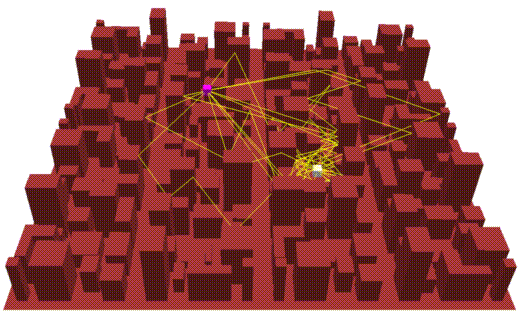Spatial acoustic analysis is usually referred to as "geometric acoustic modeling," and is generally broken down into three categories: active sound sources, passive reflectors, and listening points. The passive reflectors (i.e. the "listening space") is represented by polygons, each of which is 'decorated' with information about their sound properties, such as frequency dependent reflection coefficients. Listening points are generally computed as 2D planes in the 3D space of the model, which allows for fine-grained sampling without requiring the mathematical and processing overhead of a volumetric model. The 2D plane is generally located at ear-level for a given location in a space. Sound sources are modeled as multi-polygon objects, to each face of which is attached acoustic emanation information. This essentially discretizes the broad range acoustic emission into finite spectral bands.
Conceptually this creates a scenario where lines of acoustic energy are projected from each sound source. Distance of travel and angle of incident is used to determine acoustic energy of the line and thus number of echos / reflections. The process if similar to ray-tracing, and some companies use the technique in the consultation to create concert halls and other sound-specific places

In the scenario of a smaller room is is practical to create more detailed visualizations of acoustic energy. Energy density, time-delay, interference, and virtual sound sources can all be mapped. The interesting scenario that such research has begun to define in detail is a precedent effect known as the "law of the first wavefront," which may work against localizing sound through wavefront summation. As the difference in acoustic wavefront arrival approaches one millisecond, the source of the second wavefront is perceived as the source of the initial wavefront, regardless of the amplitude (including "dosing" performed by vector-panning). The possibility to mitigate the effect has been shown through [computer controlled] shifting of the time-delay between sound sources in the space.
Acoustic pressure visualizations in a room
